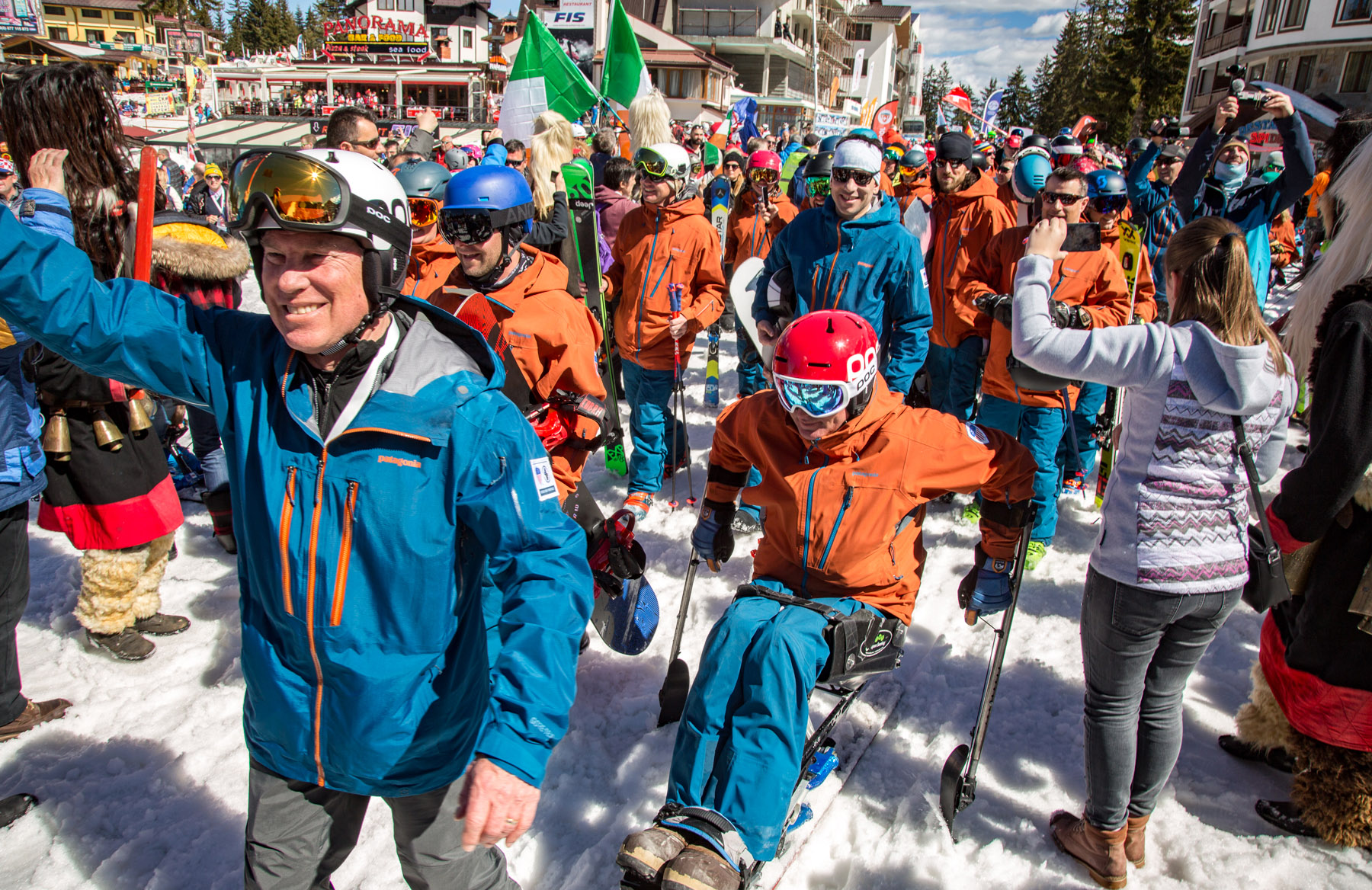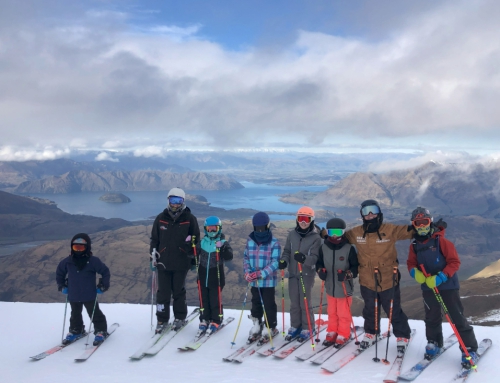Interski 2019 Day 2: Give the People What They Want
Former PSIA Alpine Team member and teaching icon Mike Porter gave the PSIA-AASI delegation some sage words of wisdom during the opening of Interski 2019 in Pamporovo, Bulgaria, Sunday night.
“When you watch what the teams from other countries are doing in their demonstrations,” he said, “you can see what kind of guests they are trying to attract.”
Austria, for instance, has been moving away from race-style carving to a form of skiing, and instruction, based on style and elegance. Croatia, which is more interested in teaching clubs, has adopted a race-based product. The British, who’s instructors are interested in working abroad in countries like France and Austria (where they can teach their traveling countrymen and women), want to ski well enough to work internationally. The same goes for the Aussies and Kiwis, who because of their shorter seasons, want to teach in places like Canada and the U.S.
And they are all competing for customers, Porter noted, with each other, and with us.
“We may get that customer they’re also looking to teach,” said Porter who, along with former PSIA Alpine Team Coach Rob Sogard, is leading the U.S. delegation around the slopes of Bulgaria this week. “So we should listen when they talk.”
 Students—and Teachers—First
Students—and Teachers—First
If there is an early theme to this year’s Interski, it is that attending countries are making an earnest attempt to understand who their customers are, so they can give them what they want.
It was certainly the basis of SNOW Operating President and CEO Joe Hession’s keynote speech, “Old Resort, New Guest,” in which he explained how constantly emerging technology, time management practices, and a wealth of other recreational options mean that ski and snowboard instructors only have matter of moments to try and introduce new guests to a lifetime sport.
“We need to continue to think about what our customers want, rather than how we have always done things,” Hession said.
As Alpine Team member Matt Boyd discovered while taking a Day 2 clinic on the TIED Model with the British Association of Snowsport Instructors (BASI), that concept can also apply to our own staff.
TIED is an acronym for Task, Information, Evaluate, and Development, a technical assessment model that first explains the criteria for a task, then allows the ability to gather more information about that criteria, evaluate whether or not that criteria was met, and finally create the opportunity for further development.
 For instance, on a one-page “cheat card,” the BASI staff handed out, the activity of Piste Short turns in Level 3 ISIA Technical Assessment Criteria, are described in the context of the task set like this:
For instance, on a one-page “cheat card,” the BASI staff handed out, the activity of Piste Short turns in Level 3 ISIA Technical Assessment Criteria, are described in the context of the task set like this:
- Perform grippy (from the fall line) symmetrical short turns.
- Ski in a variety of corridor widths on a red piste.
- Show effective posture and balance.
Boyd said there is a clear correlation between BASI’s model and how PSIA-AASI is developing its own Learning Outcomes, adding, “It’s something that makes sense for a ski instructor’s development, and also for teaching. It lets instructors continue to improve their ability to gather information and improve their people skills.”
 Perspectives and Possibilities
Perspectives and Possibilities
In taking a Day 1 clinic with the Slovenians titled, “Instructor Perspective on Challenges Facing Snowboarding,” AASI Team member Chris Rogers found a corollary between the priorities of teachers and guests.
Rogers said the Slovenians recently conducted a short survey with some of their teachers and students, asking them to take 10 seconds to think about what snowboarding is to them.
“The answer was, ‘fun,’” Rogers laughed.
More broadly, he said, is that while instructors have the ability to connect one-on-one with someone in their class, there is still the need for additional data to gain a better understanding of the plural concept of “guests.”
“We’re very good at creating relationships, but we need to be better at giving people the experiences they want.”
Rogers also referenced Hession’s keynote, in which he discussed how people can see an image of skydiving, or whitewater rafting, and immediately experience what they have seen. “But if they see a photo of someone ripping a powder line on a snowboard, they come to a lesson and spend an hour trying to balance on the flats.” How does Interski help improve the guest experience?
How does Interski help improve the guest experience?
“Here at Interski, we’ve got sixty snowboard instructors from around the world ripping around discussing how Riglet Parks, terrain-based learning, and self-starting features like rollers and banked turns can welcome people to this culture more quickly,” Rogers said. “That’s what I love about this week!”
For more insights on Interski, listen to Mike Porter on the First Chair podcast, available on iTunes, Google Podcasts, or Soundcloud.
Get daily Interski 2019 updates here – with more news, photos, and videos posted every day this week.
You can also follow PSIA-AASI’s official social media channels for real-time updates, daily news, videos, and pictures. Follow Facebook, Twitter, Instagram, and YouTube.







